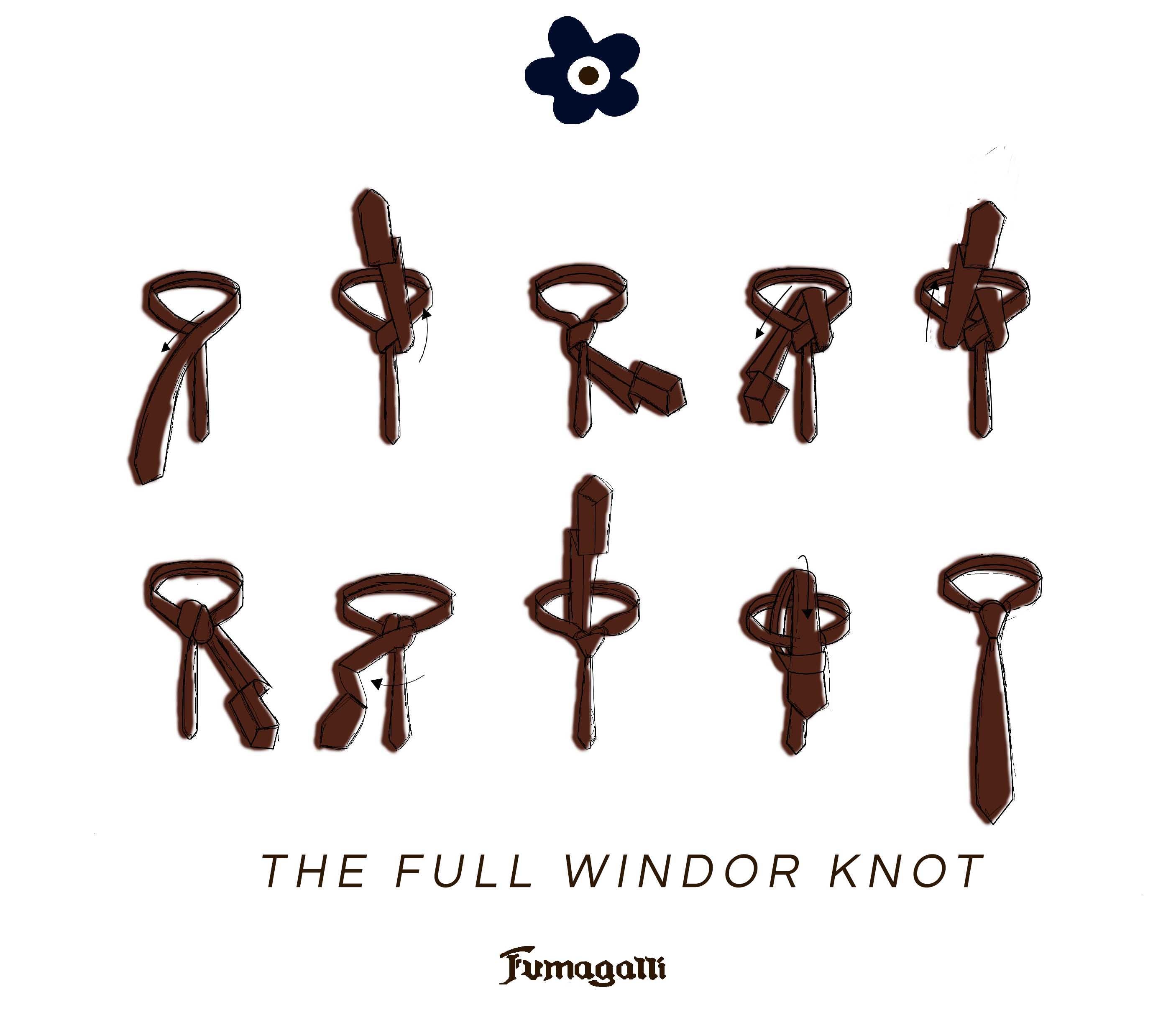How to tie a tie
Summary
THE FOUR-IN-HAND PROPER

THE SMALL KNOT
This is the most elementary of the knot but is not the one most widely used. Less voluminous than the four-in-hand but most difficult to loosen. This knot doesn’t suit every collar and isn’t right for every tie. It shouldn’t be used with bottle-neck tie, but is ideal for models that are wide or thick.
The wide strip is passed over the narrow strip only once. As a result, it can only be executed if the wide strip is turned 180 degrees at the beginning of the operation.

THE FULL WINDSOR
This knot is was not invented by the duke of Windsor. He used a triangular, Four-In-Hand knot with an extra thick tie. The Windsor knot was an imitation by the public to achieve his trendsetting style with even an ordinarily tie. It is believed that the Duke’s father, George V already know this knot.
The Windsor knot also carries a bit of controversy. In the 20’s and 30’s, America fell in deep infatuation with all things fashionable that the Duke (at that time Prince Edward) did. In fact it is well known that was the Edward VIII that launched the fashion for this knot in the 30’s and that it has remained popular ever since.
It seems that the success of full Windsor knot due to the popularity of shirt collars with wide openings (called “Kent” or “Italian” style) and it got its name only after world War.
This knot at the beginning was admired not so much for its volume, but for its extreme solidity; since it was a double knot, it would never work loose.
If you need to fill a wide collar opening using a lightweight tie this knot is perfect, thanks to its essential characteristic: large volume. At the outset the wide end should hang about fifteen inches below the narrow one.

THE HALF WINDSOR KNOT
This knot is smaller than the full Windsor, but is larger than the four-in-hand. It is more attractive than the full-Windsor and give a fullness of every thin tie.
THE PRINCE ALBERT KNOT
This knot derives from the four-in-hand proper by adding a second loop. To begin, the wide end should be made to hang about 40 cm below the tip of the narrow end. You had to pay attention when looping the first time not to tightly the knot, secure it by the insertion of two fingers, otherwise passage of the second loop will be difficult.
The knot should be tied tightly and should be long, it is recommended for use with soft, narrow ties and long collars.

THE CROSS KNOT
This beautiful knot is original and elegant, but more complicated than the Prince Albert. It has a cruciform configuration and it should not be used with bulky ties or with ties that are made with heavy woven silk, knits or wool.
